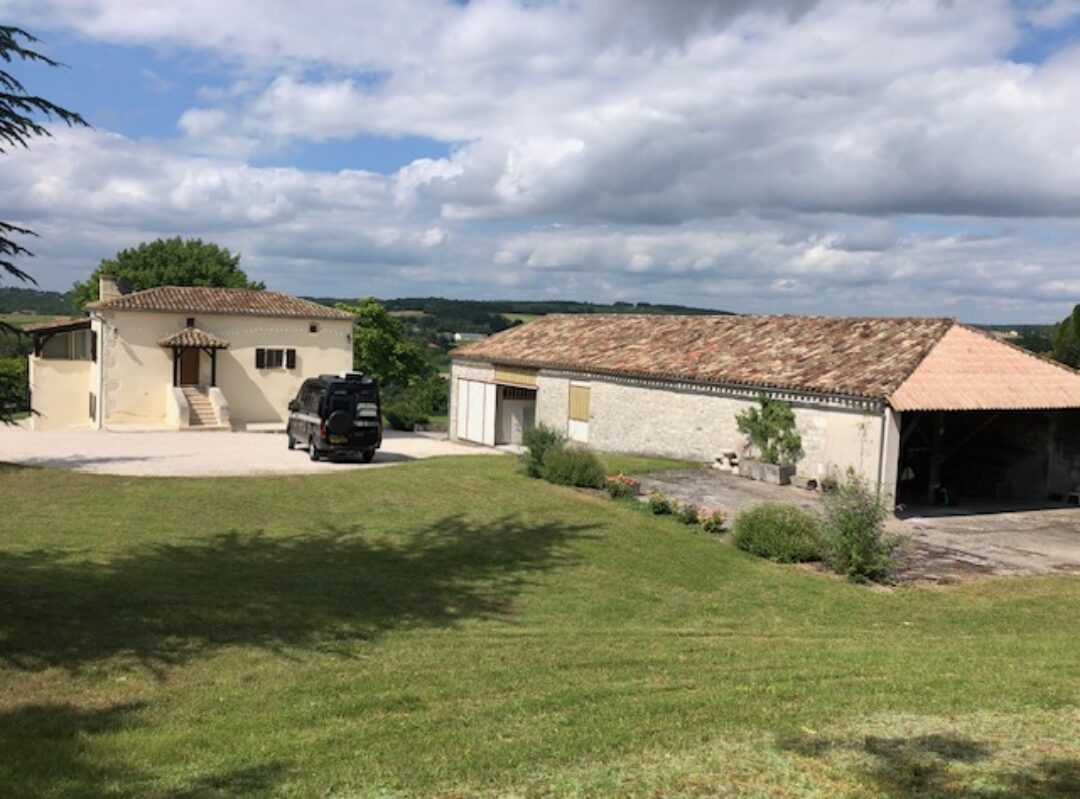We’re back on the River Lot, an area we keep getting drawn back to, and at a different, but equally lovely, riverside campsite surrounded by vines. The weather is settled here now and the vines are in full growth mode with plenty of leaves and grapes getting larger.


In contrast to this, a couple of weeks ago just before the Bordeaux trip, and following 3 days of 40C temperatures, there were storms in some parts of France and the rain was so heavy driving back from Cahors that Joe had to pull over and wait for it to ease. On one of our exchange group trips out near Bordeaux we drove along a road where a violent hailstorm had passed through a couple of day previously. The leaves and grapes had been ripped from the vines, leaving them bare and destroying part of the crop, maize fields were flattened to the ground and forests of pine trees stood snapped in half like matchsticks. The clay roof tiles of the houses on either side of the road had been smashed and most had temporary plastic coverings awaiting repair. It was quite sobering to see the havoc the weather can wreak and we’re very glad we weren’t anywhere near it in the van as roof lights could be smashed and bodywork wrecked.
We’ve explored this general area quite extensively but there are still plenty of small villages and gems along the back roads to discover so we’ve been doing our usual exploring with local walks from the campsite and rides out on the motorbike. We’re in the far west of the Lot region with the Lot-et-Garonne department a few kilometres west and the Dordogne department a few kilometres north.
I think we’ve mentioned before that the French don’t sugar-coat the horrors they suffered in the wars and their war memorial sculptures can often be very graphic. We’ve often passed through the small honey coloured stone village of Frayssinet-le-Gélat, lying at a crossroads to the north of the river Lot, and we’ve noted the memorial ‘Aux Martyrs de la Barbarie Nazie’ – no mincing of words there- and when we took the time to stop there and discover more about the incident it refers to, you can see why. According to various sources of information, on 21st May 1944 German SS troops that some weeks later went on to carry out atrocities at Oradour sur Glane and Tulle entered the town, supposedly because of reports that the villagers were harbouring members of the Résistance. Telephone lines were cut, all men rounded up and houses searched during which a German soldier was beaten. In the ensuing inquisition 15 villagers, men and women, young and old were shot or hanged.
I particularly liked the small wooden carved figure above the doorway of the church.



The small roads in the same area led us to another find – a small chateau we haven’t seen before tucked away in the forests – how did Joe miss that?! Château de Bonaguil is apparently one of the last fortified castle to be built in France, dating back originally to the 13th century but with major defensive additions made in the early 16th century. Despite its excellent military architecture and defences, the castle was never attacked. Its name is derived from the French bonne aiguille or ‘good needle’ and refers to the defensive location of the castle where it sits on a rocky promontory.

A few kilometres from the campsite a walk through the vineyards brought us out at a beautiful Romanesque church – Église de Cabanac – sitting on a plateau surrounded by vines. The church dates back to the 12th century and was originally the parish church of the nearby fort or castrum d’Orgueil of which only the ruins remain now. The church has been enlarged and renovated over the years and is a listed Monument Historique but it’s wonderful to come across these buildings with no fanfare or warning. Hopefully there will be similar finds in the coming days.



